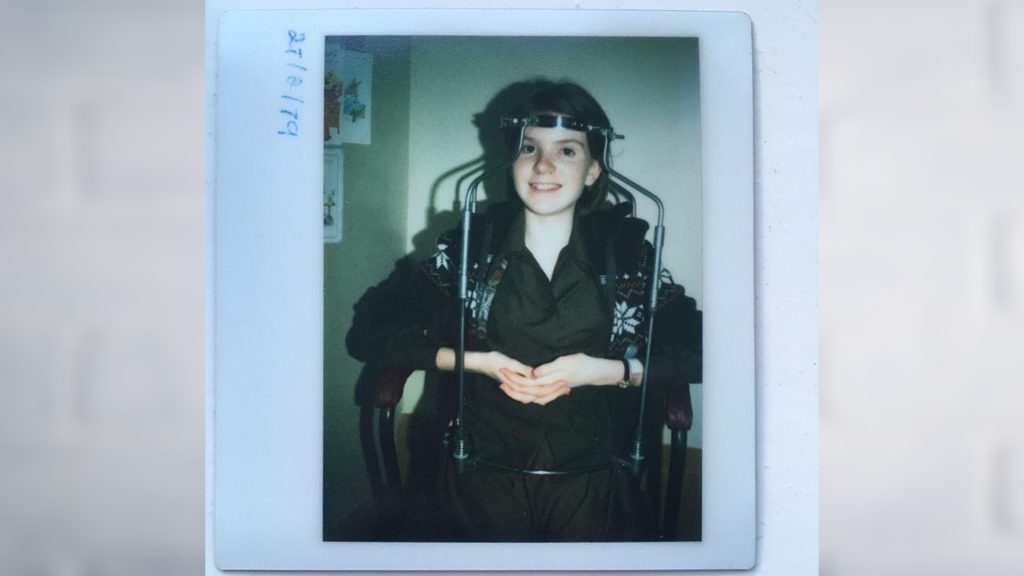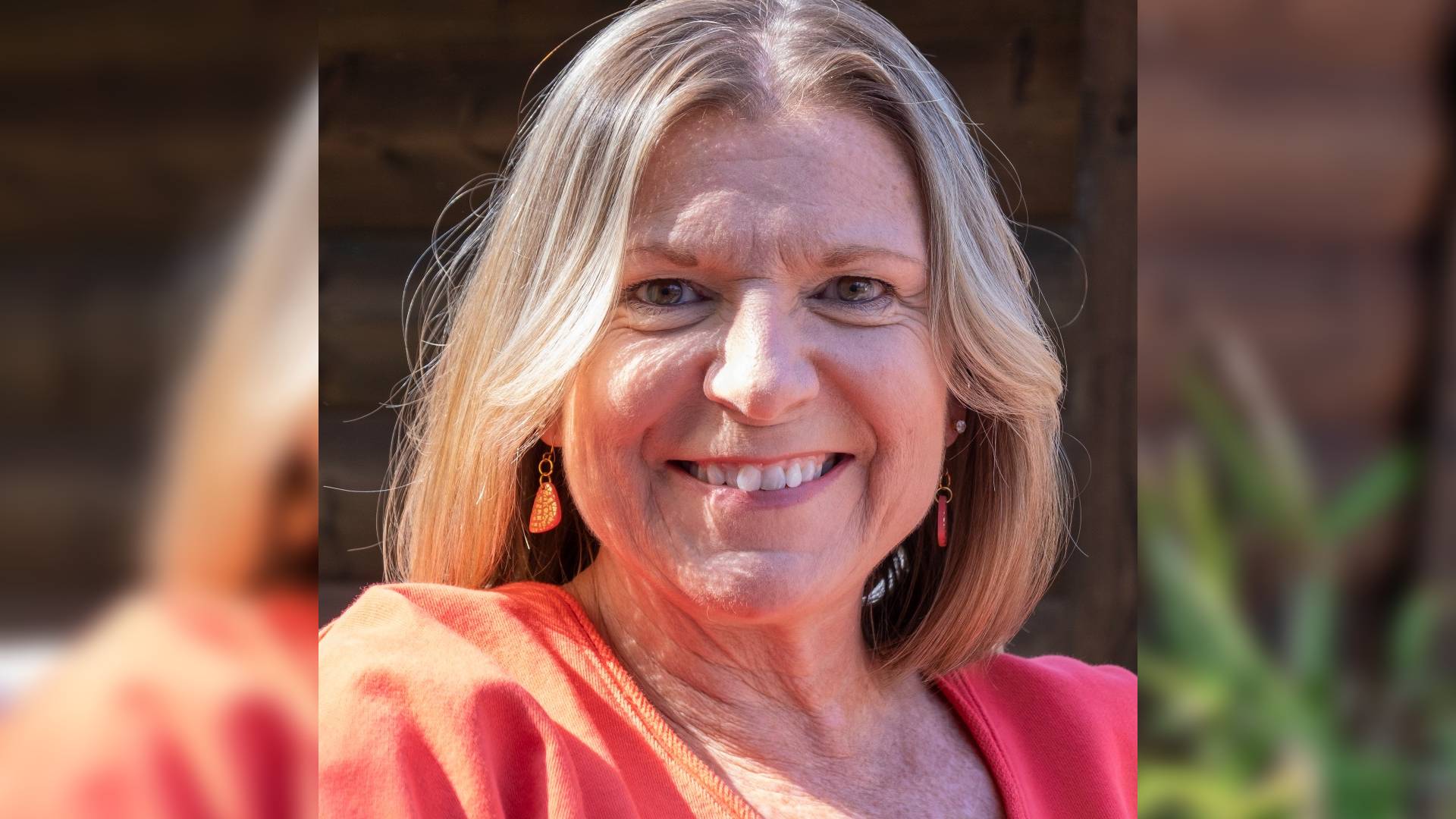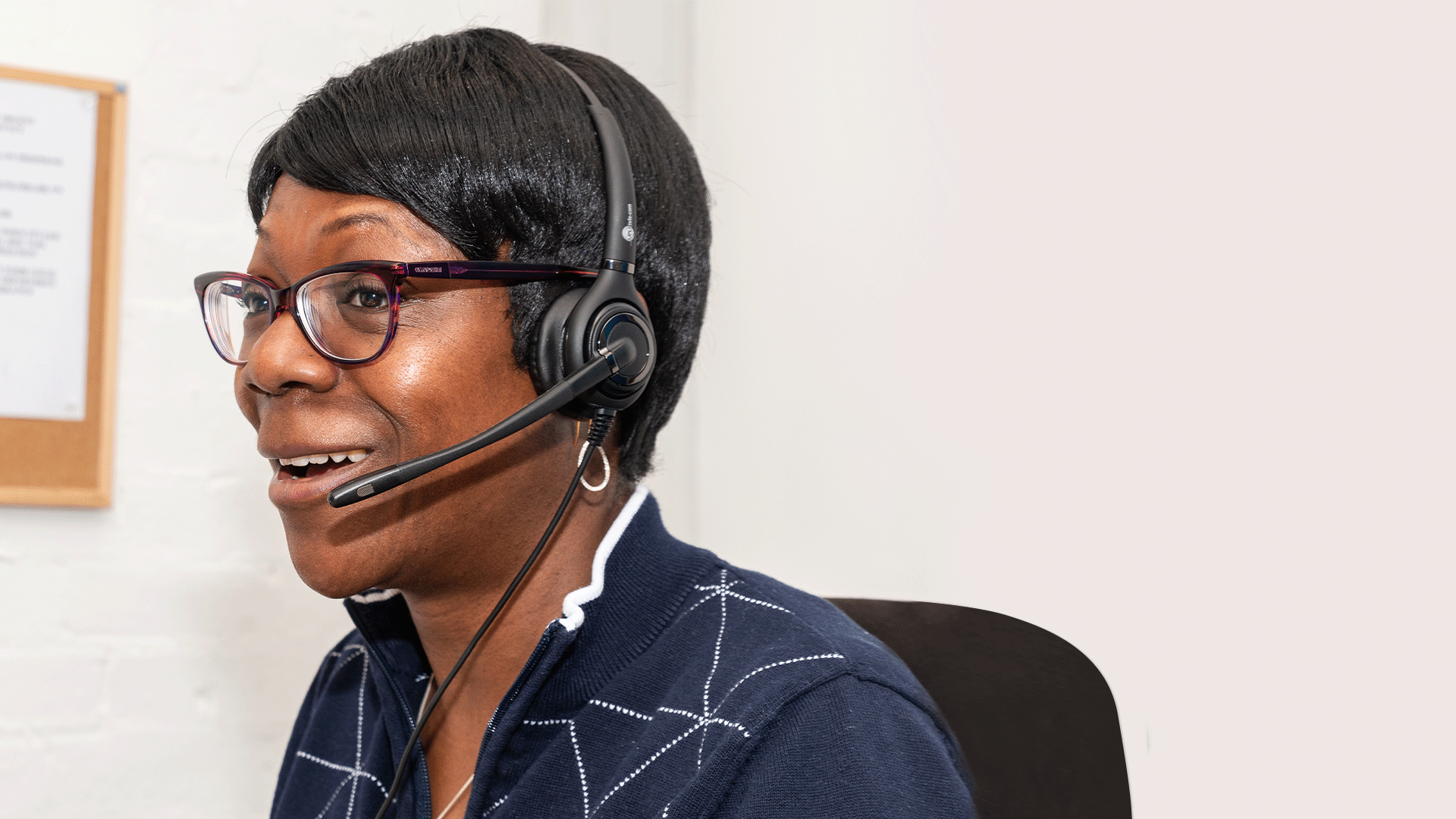My physical scars may have healed quickly, but the psychological scars they created have plagued me for decades.
I’m Helen, and it all started when I was diagnosed with scoliosis in my early teens. I was very skinny and quite aware that my shoulder blades stuck out, but no-one apart from my nan seemed to notice that one shoulder blade was much more prominent than the other.
Scoliosis is an abnormal curvature of the spine, and it can exist in isolation or in conjunction with other conditions. Some versions are congenital, and others develop in older age, but the most common is adolescent idiopathic scoliosis (AIS), meaning it develops in early adolescence and has no known cause. However, recent research is pointing towards hormonal imbalances, particularly as it tends to affect girls more than boys.
My scoliosis was S-shaped, which meant my shoulders and hips remained fairly level, but what was going on in between was anything but even! I developed a rib-hump on the right and lost the natural curve of my waist on the left. Changing rooms were my worst nightmare back then. I was acutely self-conscious and knew the other girls in PE were staring and whispering when I wasn’t looking. Most high street clothes shops in those days lacked private cubicles, so I would often loiter for ages until I could be sure of being alone for long enough to try on a new top.
As my scoliosis worsened, I faced the threat of something called a Milwaukee Brace. There was no way was I wearing that to school for years on end, so it came as something of a relief when they said I would actually need surgery instead. By this time, I was 14 and the first six weeks of my treatment was spent in a halo-pelvic traction frame to straighten out my spine as much as possible. It was pretty hideous but luckily, I was in hospital and no-one from school could see me.

Helen in the halo-pelvic traction
After that, I had my lumbar spine fused and pinned. It was hoped that would hold everything in place, but within a few months my upper spine had curved again, and I had to have another set of fusions done, which were then secured with something called a Harrington rod. With all this metalwork in my back, I have set off many metal detectors in airports over my lifetime!
Possibly the worst time of my treatment was when I had to return to school wearing a plaster cast from my chin to my hips – there was no hiding that under clothing. I don’t remember being bullied, but I do recall the feelings of being different, of being something of an outcast, and of thinking no boy would ever be interested in me. Our teenage years are very impressionable, and my self-esteem suffered badly.
While my family and friends were hugely supportive, it would have been amazing to have been able to connect with people in similar situations to myself through an organisation such as Changing Faces. That feeling of not being alone would have really helped me.
I’ve struggled with my confidence throughout my life. As a result, I’ve tended to hold back and play small to avoid drawing attention to myself. I felt that if I did, people would notice I had something wrong with me and would treat me badly. I had some deeply held beliefs around the importance of physical appearance and whether others would accept me, so I papered over the cracks of my low self-esteem and hid this part of myself from the world as much as I could.
True beauty comes from inside a person, so keep on being uniquely you and everything else will fall into place.
However, I’ve still achieved a lot – I’ve had two children, completed three 10k runs for charity, and recently retrained to be a life coach. During my training, I learnt some confidence-building strategies to use with clients that I have also been able to apply to myself. This has helped me to become much more open about my condition. Instead of hiding it away and hoping no-one would notice, I’ve decided to embrace my differences and speak candidly in business and social circles. Doing so has been like a massive weight lifting from my shoulders, and I’ve been met with nothing but kindness and support – my fears of rejection have proven to be completely unfounded.
I’m now in my fifties and my condition has worsened due to something called Flat Back Syndrome, which developed as a result of the way my fusions were done. I struggle to stand up straight and the unevenness of my back is very noticeable. However, after years of trying to hide my differences and pretend I was “normal”, I’ve found the confidence to own my condition and accept the way I am.
While representation has improved, more needs to be done to ensure everyone feels accepted. TV shows are getting better at including characters with disabilities, but inclusivity remains limited. In particular, greater representation of diverse bodies in the fashion industry is vital. Some conditions present challenges when it comes to clothing, for example our proportions and lumps and bumps don’t always fit, and this is very rarely taken into account. Seeing more people like me in the adverts of fashion brands might have made me less self-conscious as a teen.
I wish I could say to my younger self that how you look really doesn’t matter. True beauty comes from inside a person, so keep on being uniquely you and everything else will fall into place.
To anyone with scoliosis, or a similar condition, it’s so important to focus on what your body can do rather than what it can’t. You are so much more than your condition – never lose sight of that.

